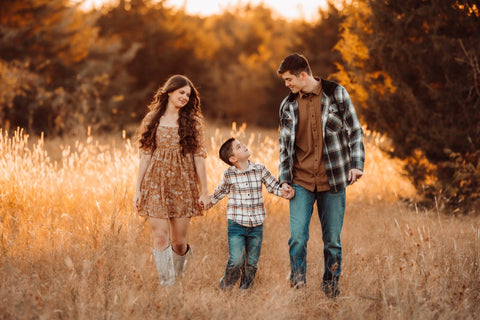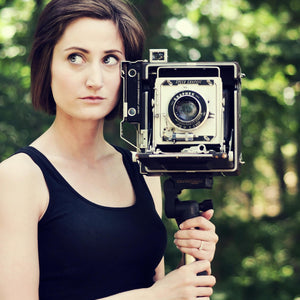- Lightroom Presets
- Mobile Presets
-
Photoshop
-
Learn
-
Support
-
Install
- Best Sellers
- Blog
By Anna Gay on | No Comments

Have you ever wondered how to read the histogram in Photoshop, and how you can use the information it is providing you? In this tutorial, we will give you the basics of the histogram, so you can understand how it can help your editing.
An example of when to take a look at your histogram would be when you are preparing your images for print. The histogram will tell you if you have any areas that are completely black, and it will also tell you if you have areas that are completely white. Also known as "clipping," the overextension of highlights and shadows is typically avoided in printing.
For example, you don't want any part of your image to be completely white and lacking tonal details because the printer will not lay down any ink, which will look strange in the printed image.
There are several different ways to view your histogram - in your right work space window panel, through your Curves panel, and also in your Levels panel, which we will look at here.
To view the histogram within your Levels panel, create a new Levels Adjustment Layer:

The histogram is a graphical representation of the tonal range within your image.
The far left of the histogram represents the shadows - the darkest portions of your image. The center area of the histogram represents midtones. The far right of the histogram represents highlights - the lightest portions of your image:

Another way to visualize what each portion of the histogram represents is to refer to the gradient below the histogram, which has shadows on the left, midtones in the center, and highlights on the right:

Think of the two sections - the histogram and the gradient - as being linked, with one being a reflection of the other:

In the image below, if we start on the far left, in the shadows, we see that the histogram extends almost all the way to the edge of the graph.
This means that, while the shadows are fairly dark, we do not really have any truly black regions in the image. Notice where the histogram's shadows region lines up over the gradient below it, and how it corresponds to the darker portions of the image:

When we look at the middle portion of the histogram, we can see that things are pretty consistent here, with no large spikes. This means that our midtones are evenly exposed:

In the highlights, we see more activity in the histogram: this is because the image has a lot of highlights, particularly in the sky. Overall, the highlights outweigh the shadows, and this image is more on the brighter side:

Here are some things we just learned about the overall exposure in our image from looking at the histogram:
This is what the histogram would look like if the image were overexposed:

As you can see, the histogram extends all the way to the right, creating solid white in the highlights.
If the image were underexposed, the histogram would be heavy in the shadows region of the histogram:

In this example, it's easy to see the solid black in the image, and the histogram confirms there is quite a bit of it.
Now that you have a better understanding of the histogram and how it works, you will be able to assess the exposure of your images in a more fine tuned way, helping you make any necessary adjustments. The more you use the histogram and see how it varies from image to image, the more sense it will make, and the more you will find yourself using it, especially when printing.
Are you looking for Photoshop actions that will help you get the proper exposure, both for printed images and images optimized for web sharing? Be sure to check out our workflow collections: PURE Color Workflow and the LUXE Newborn Complete Workflow.
Do you have any questions or comments about the Photoshop Histogram? Leave us a comment below - we would LOVE to hear from you. And PLEASE SHARE our tutorial using the social sharing buttons (we really appreciate it)!




Anna Gay is a portrait photographer based in Athens, GA and the author of the dPS ebook The Art of Self-Portraiture. She also designs actions and textures for Photoshop. When she is not shooting or writing, she enjoys spending time with her husband, and their two cats, Elphie and Fat Cat.

Comments